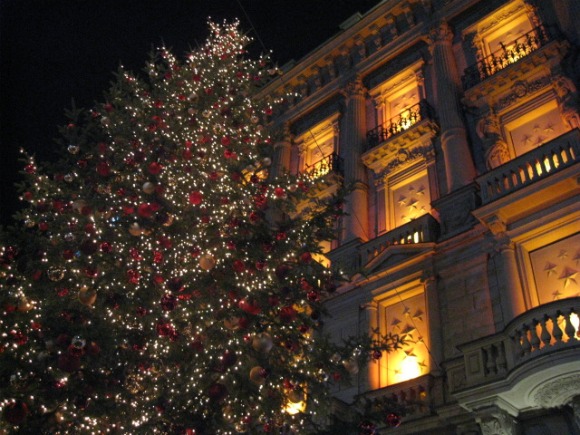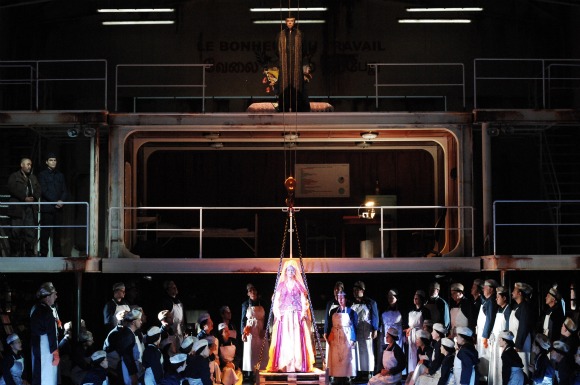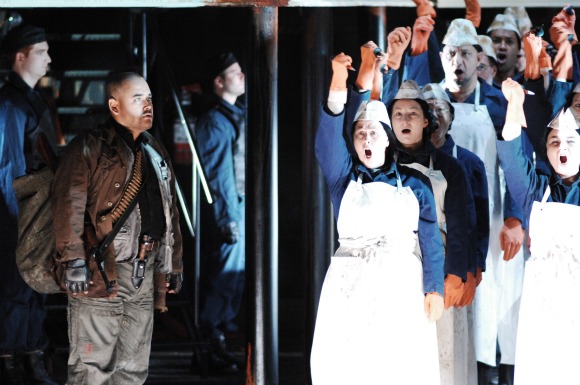Since the big snow three weeks ago, the temperature has dropped considerably in Zurich. A snow-white world welcomes you when you get up in the morning, and you hear the elementary school children throwing snowballs on their way to school.
The big twinkling Christmas tree decorated with Swarovski crystals is stood up as usual in the Christmas market at the Central Station. As many as 160 venders are busy, selling cheese, dry sausages, raclette, wooden crafts of traditional Swiss arts and crafts or handmade natural stone accessories, as well as sweaters from Peru or silks from China.
It is the busiest time of the year. Finishing up your work, meeting people, small parties to attend and so on. Although fixed appointments will gradually disappear from your schedule once it’s done, there are things that tend to be put off later.
They are decorating inside the house, confirming the menu for Christmas Eve, looking for presents, and baking cookies and so on.
Whether you are religious or not, this custom has become a familiar event for me, even though I feel some temperature difference in the enthusiasm of religious Europeans. However, besides that, if you somehow plan to celebrate the Japanese-style New Year, you have to be in high spirits and energetic just for the sake of these several weeks of the year. In order to enjoy every process, some cheering voices may be required in your mind.
Many small presents will be prepared for one person. When you think of the presents to give to the people you expect that night, the number will be several times the number of people, which is really something. You buy several types of winterly wrapping papers and ribbons, and start wrapping each one by changing the color of paper and adding some decorations in place of sign.
While I knew it was about time to browse and look for such things, I hurried through the street by avoiding the people among the vendors, telling myself that I would come to the Market some other time to take a good look. The fluffy fraglance of cinamon and anis just passed me.
Snowflakes started to flutter down on the city streets in the twilight.
The temperature is probably around -5℃. Lots of people have gathered around the hot wine vendor. Having a little flushed cheeks and displaying heir breaths like smoke, they seem to have been chatting there for quite a while.
My feet headed from the street where brand shops stood side by side, to the plaza of the financial district.
Although you may find many Sprünglie, a well-established chocolatier, in town, I somehow end up with this shop. Since they do not have this brand in Japan, it is the place where I buy my souvenirs or presents, just like going to Akasaka all the way to buy the sweet bean paste of Toraya in Japan.
Holding some boxes wrapped in gold packing paper, I chose the black truffle freshly made today for myself.
As the light was so beautiful that I decided to walk to the post office.
Medieval stone-paved lanes often branch off in narrow paths. Restaurants are lit, and numerous miniature bulbs are everywhere, just like falling from the sky, lighting up the people’s faces passing by.
The next corner is where I am heading.
The church bells are ringing loud and clear in the freezing sky.
http://www.spruengli.ch/
Leave a Reply
When you go to see an opera, and especially when you have booked a nice seat, you try to have a good sleep the night before, as much as possible.
In a small space with a seating capacity of 1100, such as Zurich Opera House, the distance towards the stage is not that far. Unless your seat is close to the ceiling, as the acoustics of this opera house is very good, you need proper physical strength as well to receive the impact of real elite human being performers.
However, I also enjoy the footwork of dropping in the opera house by reserving a seat online if still available, when I am feeling good and have enough time. Unless it is premiere or a premium seat, I believe wearing an outfit that is not so fancy is acceptable to your neighbors. As far as you feel comfortable, that’s all matters. In such a manner, by keeping your shoulders relaxed, you can enjoy just like the time warp into the extraordinary world of opera.
A good friend of mine from Japan came here. She was well versed in plays and Kabuki. One of her goals of this trip was, of course, to see an opera. Luckily I found out that “Les pêcheurs de perles (The Peal Fishers)” by Bize would be showing when she came.
Having won the “Roma Prize” which was the gateway to success for French artists, Bize returned to Paris from Italy. This work was written when he was 25 years old. Soon after the premier of “Carmen” that was performed in about 10 years after his return, he died of illness at the young age of 36. Having established an important position in the opera world and his great talent that could have changed the history was suddenly gone. There is no doubt that if any opera piece had been created after “Carmen,” how wonderful the opera world would have been.
Although he was not prolific, probably due to his low number of pieces known in opera, the size and the composition of “Pearl Fishers” is quite often compared with those of “Carmen.”
It is said that “The Peal Fishers” has been transformed quite dramatically after Beze’s death, and this piece is still continuously developing with changing details by many unique directions.
Although Carlo Rizzi, the conductor, defines that “Carmen” is a more sensual and exciting dynamic opera with full of life, he says;
“When Bize wrote the ‘Pearl Fisher,’ he was not really debuted yet in that era. He was young, and because of his youth, I believe, this piece has a sense of purity or transparency. The story is very simple and easy to understand. Anyway, the melody of each piece of music is clear and very beautiful.”
It was the latter part of the 19th century France. While the popularity of Italian opera was still dominant, it was an epoch when a “French opera” was born, which gave a new trend to the world of opera.
I wonder such a historical backdrop has affected the story.
The director was Daniel Herzog, who was known for his strong dramatic impression. He captured with a little storng social nature.
Although the scenic art or the lightings of Zurich Opera House quite often incorporate some devices that surprise the audience, no complicated structures were found this time, probably due to the easy-to-understand story.
The scene was a beach in ancient Ceylon.
The stage did not move much. It was structured in 3 layers from the very beginning.
According to the previously mentioned , “First of all, look at the very bottom. Here you see the peal fishers all lined up, and this is the sympol of laborers. The middle is the middle-class, and the very top layer with a run-down monastery is the top of the system of the ‘Pearl Fishers’ world.”
Also in order to clarify such a structure, the pearl fishers remained on the stage.
Tens of pearl fishers stayed there all the time, by moving their hands wearing orange color gloves all together, which dragged weirdness of the power of a mass.
Baritone Franco Pomponi played Zurga, the newly chosen head of the pearl fishers, while Nadir, his childhood friend, who once had loved the same womanand had conflict with him, was performed by tenor Javier Camarena.
The priestess Leila, once was a lover of Nadir but sent here to the beach to pray for the safety of the pearl fishers, was performed by soprano Malin Hartelius.
Bass Pavel Daniluk played Nourabad, the Brahman high priest who brought Leila.
The priestess Leila was asked by Zurga never to remove the veil and to remain virgin, only to pray for the safety of the pearl fishers.
However, by listening to Leila’s voice, Nadir realized “That’s her,” and both of them recognized each other.

Famous pieces of music were sung one after another: arias, duets and terzettos.
Reunion with an old friend, then the duet “fond du temple saint (From the depth of the holy temple)” sung by Camarena and Franco Pomponi, praising their friendship since there would be no lover who had brought conflict between them, was truly beautiful.
The most well known piece is, of course, “Je crois entendre encore” which Nadir sang thinking of Leila. While Camarena is one of the most popular singers in Zirich Opera House, when the first phrase of this song started to give a little bit lonely tune, I felt so romantic that I was wrapped in the softness as if someone was taking me to somewhere. Although he was from Mexico, he had some oriental feeling and sang his love for Leila, expressing the liberty of a young man who had been away from the village for a long time.
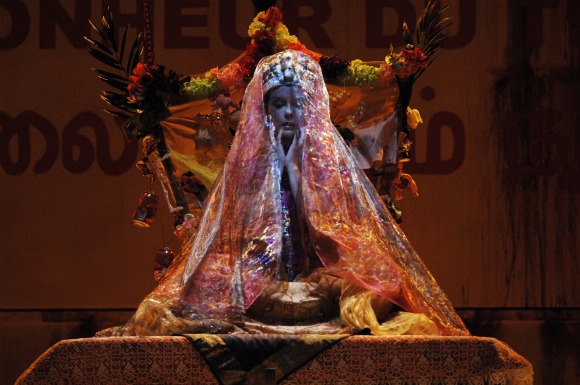
The soprano of the priestess Leila was almost divine-like. Nobleness was incorporated into the transparency of the melodies that Carlo Rizzi, the conductor, repeatedly emphasized.
Especially, the aria “Dans le ciel sansa voiles” was wonderful, following “, divin Brahma!”, that resounded from the top of the stage by Leila with her veil on, at the last scene of Act I.
The fact that Leila and Nadir were in love again was revealed to Nourabad by the guards, and they were condemned to death.
Leila begged Zurga to spear Nadir. When Zurga realized that the priestess was actually Leila, Zorga told her about his love, but could not change Leila’s feelings. Out of jealousy, Zurga condemned them for execution.
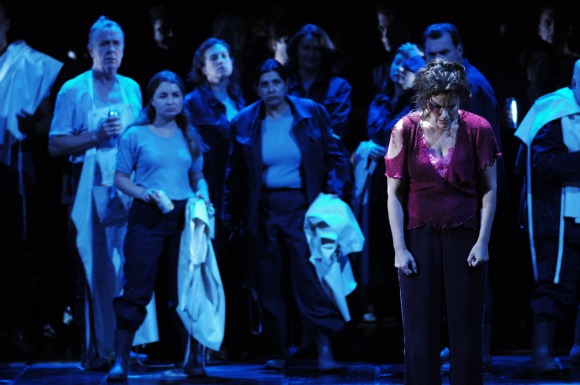
Leila said, “If I am to be killed, please take this to my mother,” revealing her pearl necklace. That was the give he left with the girl who rescued him by risking her life when he was on the run.
Zurga lit the fire in the village, and he decided to let them go during the villagers were in chaos. The song sung before this scene, another famous terzetto, “O lumiere sainte” was sung by these three characters, and their voices rolledin and out like waves, filling the opera house with the dramatic mithgy ocean.
At the end, the villagers killed Zurga. Nadir and Leila disappeared into the light. The story ended that the authority was brought down by the people, and despite the hesitation in religion, love shone at the very end. As the story was easy to understand, I was able to enjoy beautiful and rich singing voices comfortably, without fiercely following the subtitles.
That night, the melodies of the arias were echoing deep in my ears throughout the night.
Photo: © Suzanne Schwiertz
003
http://www.opernhaus.ch/
